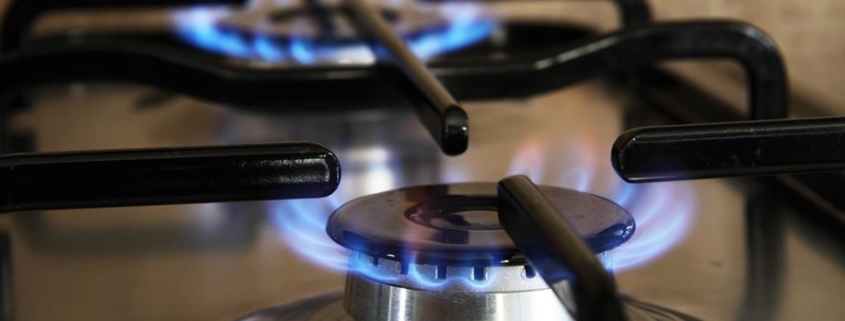Reduce, Reuse, Recycle and Reconsider the Future of Natural Gas
Reduce, reuse, recycle. It just makes sense. That is why industries spanning from fashion to steel are embracing the circular economy. But what about applying the concept to our existing energy infrastructure?
Consider the future of natural gas, a fuel that currently provides about 30 per cent of all energy used in Canada. “Electrify everything and power it all with renewables” is the accepted wisdom among purists in energy transition circles. To help accelerate electrification, some Canadian cities have announced plans to ban the use of natural gas for new homes and buildings.
But these discussions rarely mention the potential for an alternative option for achieving net zero emissions: transitioning natural gas into a cleaner fuel. Also overlooked is the massive challenge of ripping out the existing pipelines and building a much larger electrical system to replace gas.
There are multiple strategies to make gas a low-carbon fuel of the future. First, gas can be blended to reduce its carbon intensity. Renewable natural gas can be blended with conventional gas to reduce emissions. Clean hydrogen can also be blended with natural gas: For example, companies in Britain are planning to blend 20 per cent of hydrogen into gas by 2023. This amount will not require any changes to the existing gas distribution or burner equipment.
Efficiency is another lever for reducing natural-gas emissions. Installing more efficient end-use appliances can reduce the consumption of gas. Natural-gas heat pumps have the potential to significantly improve efficiency over today’s furnaces.
A valid concern about the continued use of natural gas is the tendency for small amounts of methane to leak from pipelines. Escaping methane is a more powerful greenhouse gas than carbon dioxide. In the future, improvements to infrastructure and regulations could make near zero leaking possible.
Any remaining emissions could be captured or offset. For large industrial facilities with concentrated emission streams, carbon capture, usage and storage projects could remove carbon. For the dilute and widely dispersed emissions from buildings, offsets could work: for example, planting trees to absorb the carbon or using direct air capture machines to suck carbon dioxide from the atmosphere.
There is also the practical matter that replacing natural gas with electricity will prove difficult in Canada. This is certainly true for heating, including for industrial processes: According to McKinsey & Company, only about half of industrial energy load can be replaced with electricity today. And for everyday citizens, an electrical power system would need to be greatly overbuilt to serve peak consumption on the coldest winter days.
A report released by the consultancy Guidehouse, commissioned by FortisBC, helps illustrate the challenge: For example, on a summer day, demand for natural gas in B.C. is equivalent to about three gigawatts of electricity demand. Contrast that with the coldest winter day, when demand increases to 18 gigawatts. To put it in perspective, this peak winter demand is 50 per cent greater than BC Hydro’s entire hydroelectric generation capacity. The report also concluded that a transition pathway that uses gas infrastructure would cost less, saving B.C. more than $100-billion by 2050 compared with an all-electric future.
Next, the expenses of the energy transition must be considered. Replacing Canada’s extensive system for delivering natural gas to homes and businesses will be expensive and time-consuming. Canada’s existing pipelines are long enough to cross the country 75 times. Instead of replacing this massive system, it seems better to consider how this large network can be reused.
Furthermore, replacing heating appliances such as furnaces and water heaters is expensive for homeowners. Canada-wide, natural gas makes up about 40 per cent of all energy consumed in a home. In Alberta and Saskatchewan, the average is even higher at around 70 per cent. Switching this much energy to electricity will require upgrades to home electrical systems, for instance upsizing electrical boxes and wiring. Another complication is that natural gas pipes are woven throughout homes, delivering energy to furnaces, fireplaces, barbecues and stoves.
Finally, electrifying heaters, cars and all appliances will require more electricity than the established grids can handle, even in urban neighbourhoods. Electric vehicles consume large amounts of power when charging – more than eight times a home’s typical power consumption. As more homes purchase EVs, it will strain the neighbourhood’s electrical grid and require upgrades. Adding on electric heating will require even more investment. In rural areas, the problem will be even more costly.
This does not imply that electric heating will not grow. For new construction, more homes and buildings will go all-electric. Industrial processes will transition to electricity where feasible, and more people are likely to replace their air conditioners with electric heat pumps. However, for the existing user base of natural-gas users, the significant barriers for switching render it inevitable that the fuel is here to stay.
Today’s natural-gas infrastructure works well. On the coldest of days, it reliably keeps Canadians warm. Displacing natural gas will prove difficult, so it makes sense to transition it into a cleaner fuel. Not only is using the existing pipelines and equipment more sustainable than building new ones, it has the potential to decarbonize the economy at a lower cost.
This was originally published in the Globe and Mail.


